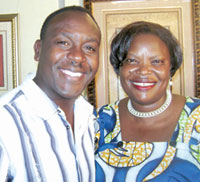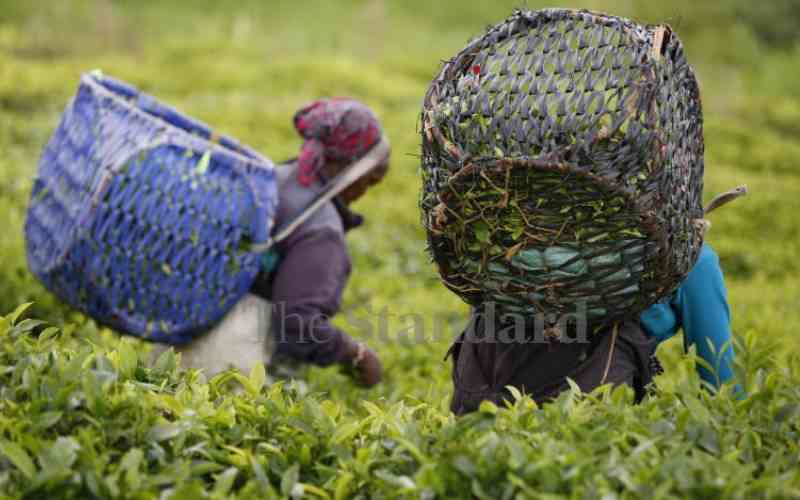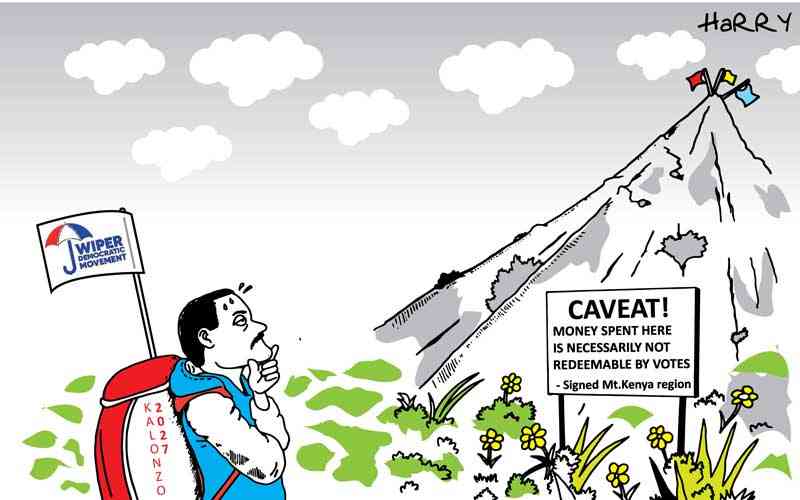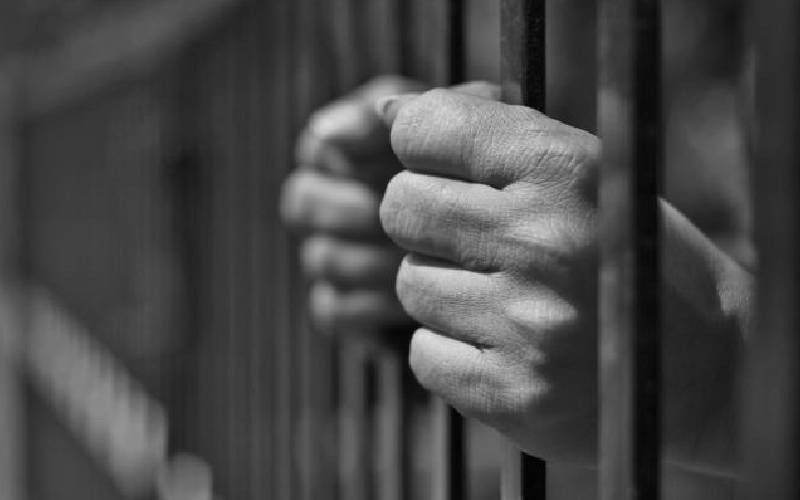Kiundu Waweru
Theodore Roosevelt, a former US president, visited Kenya, then known as British East Africa, in 1909 for a hunting Safari. He travelled abode the Lunatic Express from Mombasa accompanied by wildlife photographer Cherry Keaton capturing the expedition in his camera lens.
The result was TR In Africa, a black and white silent film that went down in history as the first film to be shot in Kenya. A century later, many foreign and local films have been shot with some bagging international accolades. And in a documentary, A Hundred Years of Filmmaking in Kenya, the story is well told.
Launched on Wednesday at the National Museum of Kenya, the historic documentary by Simba Vision film was played to an eager audience that appreciated the rich history intertwined with the nation’s history.
 |
Narrator Ben Lunga’ho with director Anne Mungai. [PHOTO: KIUNDU WAWERU/STANDARD] |
"The past informs the future," says Prof Kimani Njogu, Director Twaweza Communications, who is the executive producer of the documentary.
The flick features interviews with veteran filmmakers, excerpts from films and re-enactments by Keith Pearson and Mburu Kimani and narrated by actor Ben Lung’aho.
The first film featured wildlife and the Savannah while the next tiltled Africa Speaks, shot in 1920s featured safari expedition. It inspired fictional films including Trader Horn (1931) and memorable adventure films like The Snows of Mount Kilimanjaro, King Solomon’s Mines and Mugambo.
In the mid 1930s, the British colonialists experimented with Bantu Educational cinema which were propaganda films geared to educate Africans on how to be cultured and be respectful to the British.
In the 1950s, Kenya’s rugged terrain attracted Hollywood stars on wild adventures. "After the World War II there was a rush for feature films about white hunters and glamorous ladies and wild animals. Movie stars like Clarke Gable, Avre Gardner, Frank Sinatra and Stewart Granger coming to make these films in a very glamorous location different from Hollywood," says Jean Hartley, one of the interviewees featured in the documentary.
"Just before independence, Kenya Broadcasting Commission was born and it would see broadcasters feature in the early local productions. In mid 1960s, Born Free, a big international film about Joy and George Adamson was shot in Kenya," says Simiyu Barasa, Director, Simbavision.
He adds that in 1968 Ragbir Singh collaborated with Kuljeet Pal and made the first Kiswahili film, Mlevi, starring the then popular television personalities Athumani Kipanga and Mzee Pembe. Ragbir was born in Kisumu and had worked in KBC as a cameraman. He produced another Hindi feature, Visna, and as he prepared to shoot another Swahili feature, Mrembo, he died in a tragic road accident.
Movie Titles
Mohinder Dhillon of Africapix did award-winning documentaries, Mau Mau, Portrait of Kenyatta, Black Man’s Land and White Man’s Country.
At this juncture, Levinson Nguru, founding principal, Kenya Institute of Mass Communication, narrates how the government formed a film production unit at the institute to train filmmakers.
Stay informed. Subscribe to our newsletter
And in 1972, veteran filmmaker Alan Root shot Mzima, Portrait of a Spring using a floating coffin. In 1975, Root made Safari by Balloon, and The Year of the Wildebeest (1976 ), both winning awards with Serengeti Shall Not Die bagging an Oscar.
"There was also a box office flop, Bush Trackers, based on Meja Mwangi’s book in the 1970s by Gordon Parks who died before the production. And, says Simiyu, 1981 was ushered with the success of the Rise and Fall of Idd Amin produced by Sharad Patel. The period was followed with a lull in film production after the 1982 attempted coup.
In 1986, Nguru was heading the Kenya Film Corporation, and he commissioned a successful film, Kolormask, which sadly also heralded the last of the government sponsored films.
Out of Africa and another international production, Kitchen Toto came out in 1985 creating a new buzz with Kenya as a location. Then 1992 stole Kenyans’ imagination with the production of Saikati directed by Ann Mungai, a graduate of KIMC.
"The biggest challenge in the history of film was funding especially while shooting with the 35mm and 16mm celluloid. This changed in 2002 by the shooting of Dangerous Affairs by Njeri Karago and Judy Kibinge using digital format," says Simiyu.
Dangerous Affairs would herald a new dawn of local productions with Albert Wandago’s Naliaka is Going, Njeri Murago Munene’s Behind Closed Doors, and Bob Nyanja’s Malooned following suit.
Enter Riverwood with low quality vernacular productions of the Machangi and Kihenjo fame that generated a tidy sum.
As Kenyans demanded quality, the second generation of Riverwood hastened to fill the gap, with producers like Mburu Kimani with his Munge’ngano (The Race) Simiyu Barasa’s Toto Millionaire, 2006 and Mr Love Doctor 2009.
 The Standard Group Plc is a
multi-media organization with investments in media platforms spanning newspaper
print operations, television, radio broadcasting, digital and online services. The
Standard Group is recognized as a leading multi-media house in Kenya with a key
influence in matters of national and international interest.
The Standard Group Plc is a
multi-media organization with investments in media platforms spanning newspaper
print operations, television, radio broadcasting, digital and online services. The
Standard Group is recognized as a leading multi-media house in Kenya with a key
influence in matters of national and international interest.
 The Standard Group Plc is a
multi-media organization with investments in media platforms spanning newspaper
print operations, television, radio broadcasting, digital and online services. The
Standard Group is recognized as a leading multi-media house in Kenya with a key
influence in matters of national and international interest.
The Standard Group Plc is a
multi-media organization with investments in media platforms spanning newspaper
print operations, television, radio broadcasting, digital and online services. The
Standard Group is recognized as a leading multi-media house in Kenya with a key
influence in matters of national and international interest.









